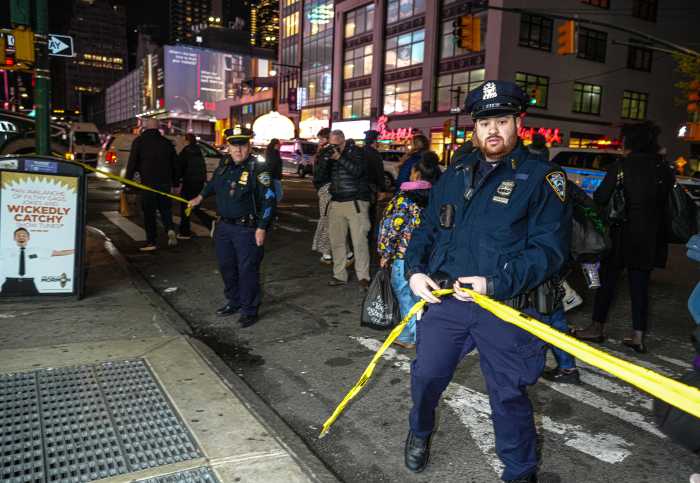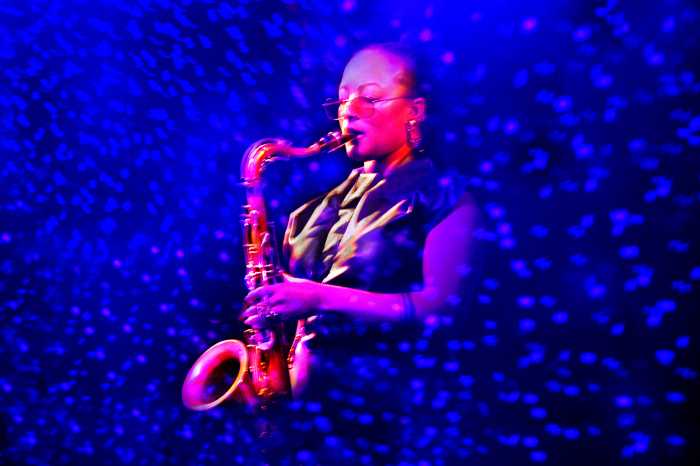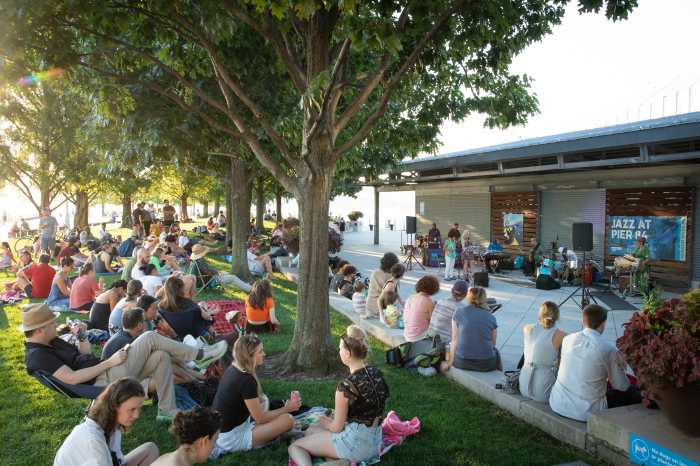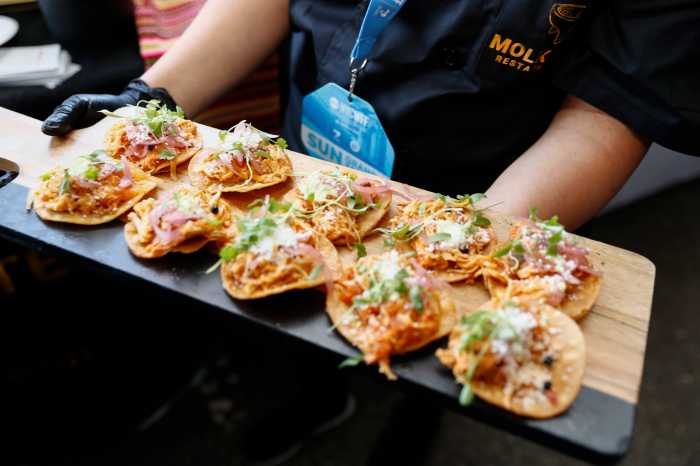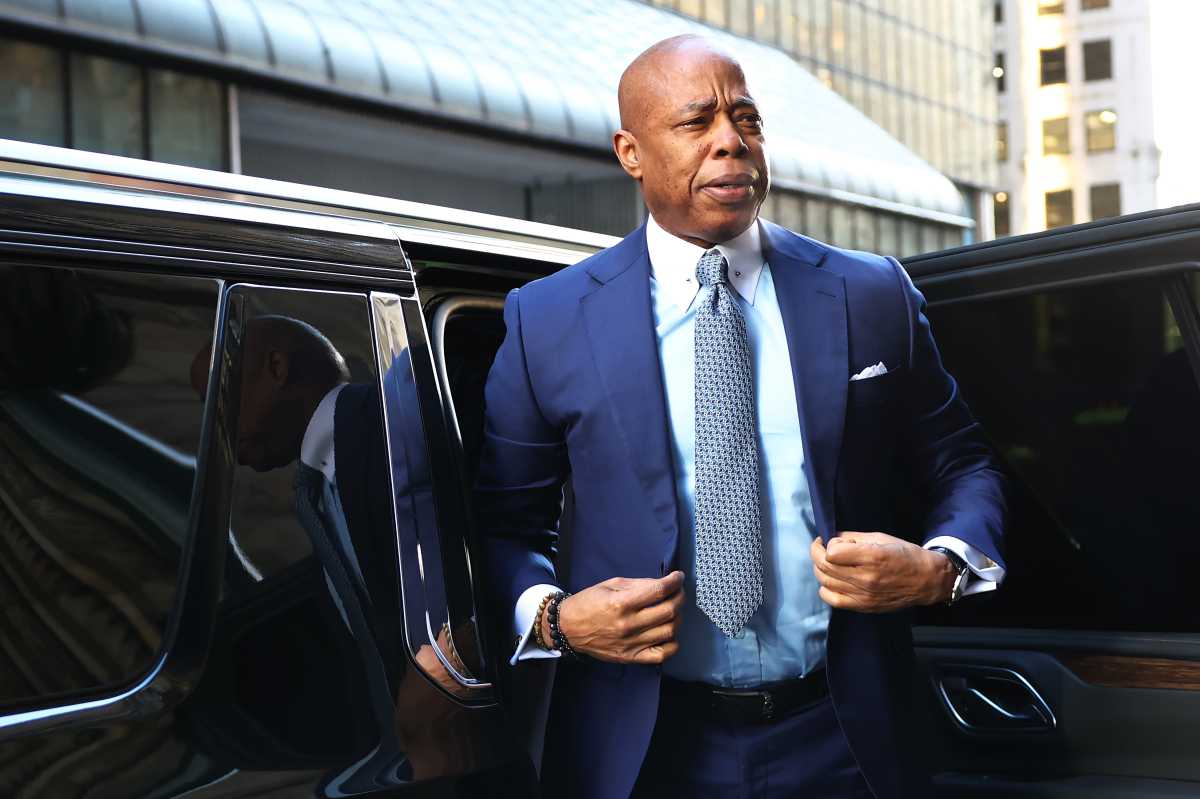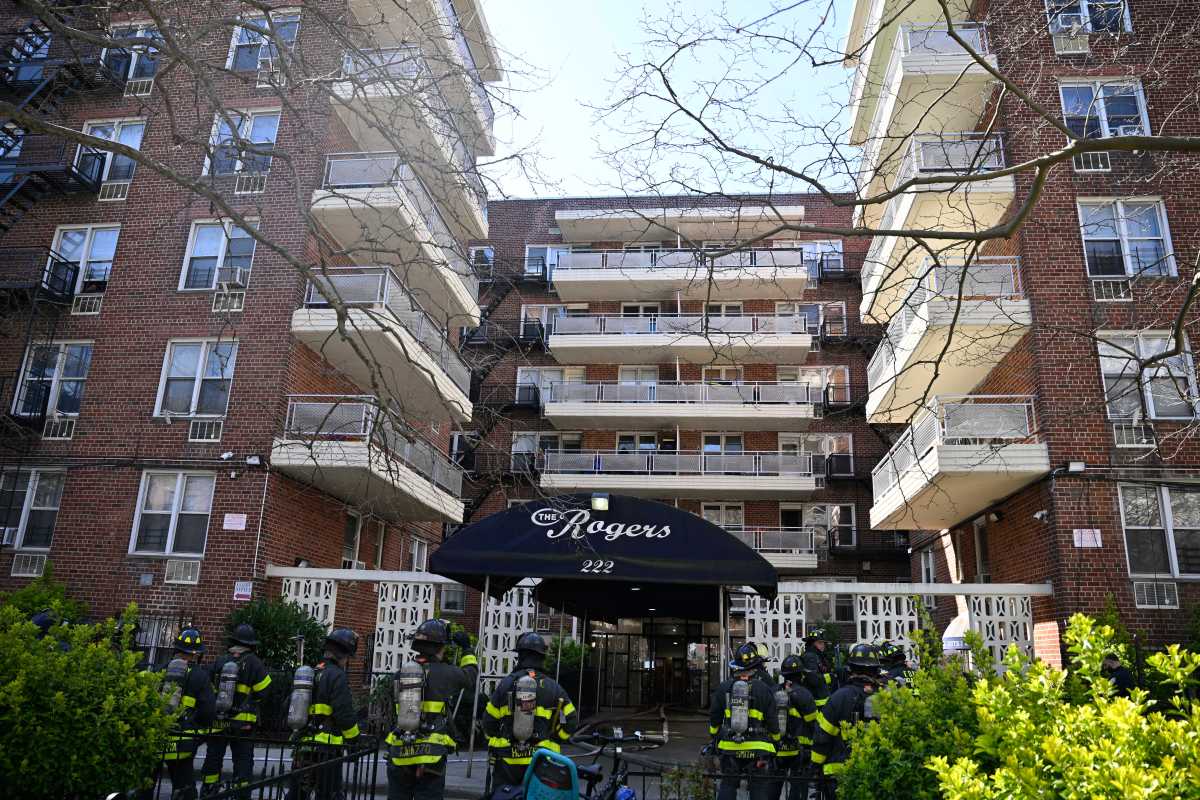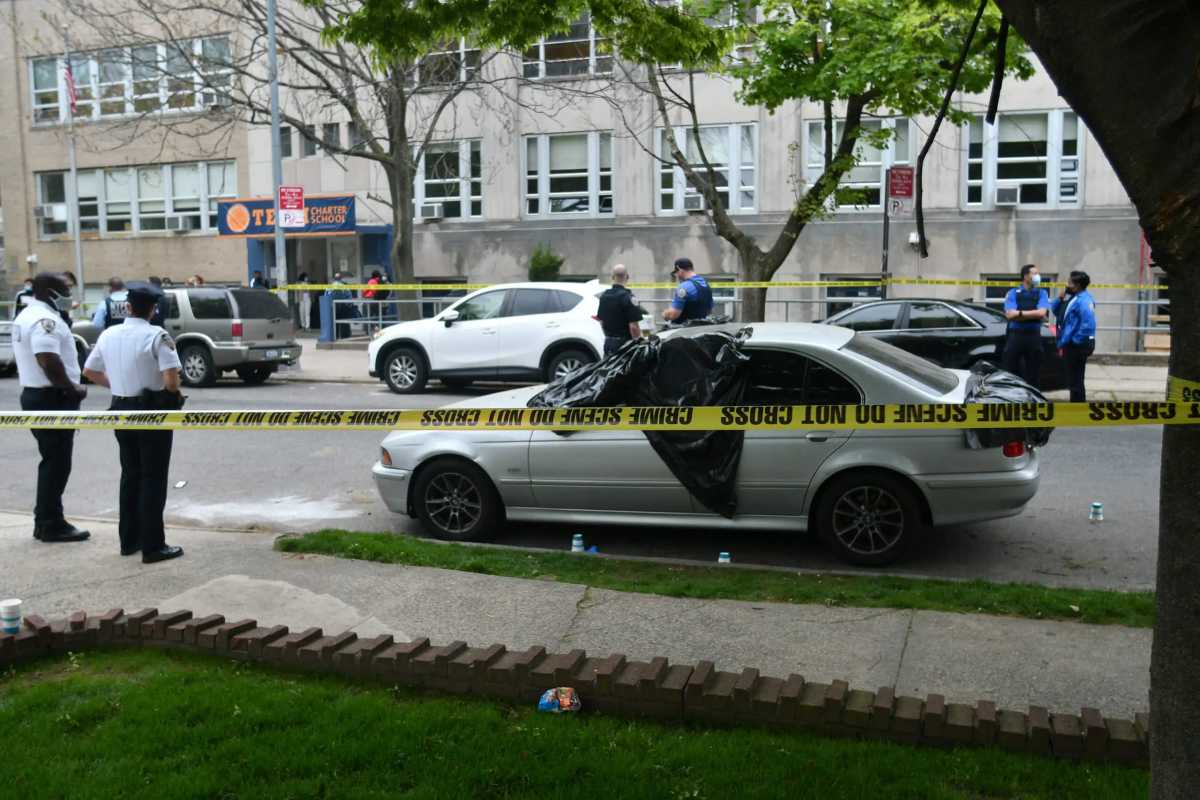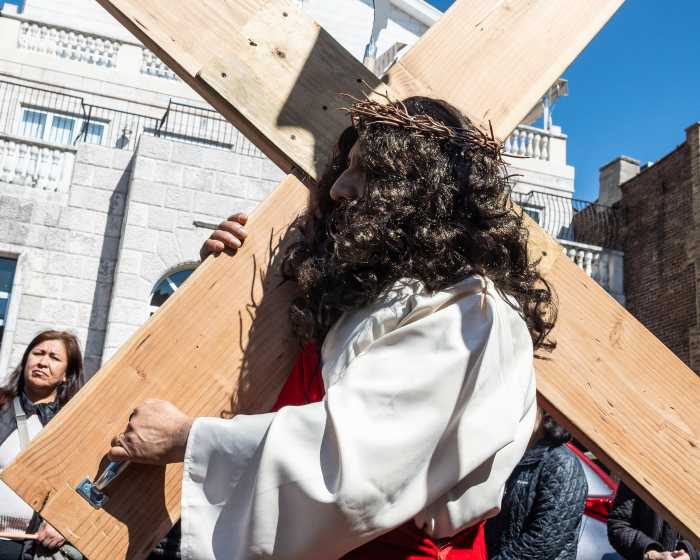-
 High Street on Hudson
High Street on Hudson637 Hudson St.
It’s difficult to pick which menu offers the tastiest options at this all-day restaurant that garners rave reviews from critics and patrons. For those who can’t snag a seat in the dining room, there are breakfast and sandwich options available at the takeout counter.
Mulino a Vino
337 W. 14th St.
More than 100 Italian wine-by-the-glass selections are available to pair with the inventive takes on Italian cuisine from Michelin-starred chef Davide Scabin in this basement-level space.
Toro
85 10th Ave.
Inspired by the tapas bars of Barcelona, standouts on the menu include a sea urchin and miso butter sandwich and grilled whole shrimp.
” data-id=”112068923″ data-link=”https://amnewyork.wpengine.com/wp-content/uploads/2019/10/8703_image.jpg” class=”wp-image-1.12068923″/>Photo Credit: Linda Rosier -
 Cielo
Cielo18 Little W. 12th St.
Those who can get past this nightclub’s doorman will enjoy big-name DJs and one of the best sound systems in New York.
PH-D Lounge
355 W. 16th St.
Incredible views of midtown and the occasional celebrity dropping by are main draws at this exclusive rooftop venue at the Dream Downtown Hotel.
The Tippler
425 W. 15th St.
Located under Chelsea Market, this cocktail bar offers a respite from the club scene of the Meatpacking District.
” data-id=”112068922″ data-link=”https://amnewyork.wpengine.com/wp-content/uploads/2019/10/8704_image.jpg” class=”wp-image-1.12068922″/>Photo Credit: Linda Rosier -
 In Support Of
In Support Of342 W. 14th St.
This boutique features clothing from up-and-coming designers and donates a portion of its proceeds to charity.
Posman Books
75 Ninth Ave.
An independent bookstore inside the Chelsea Market that offers a wide selection of children’s books, fiction, nonfiction and cookbooks.
Caserta Eye
67 Eighth Ave.
Bespectacled New Yorkers can find new and vintage frames at this optometry shop.
212-627-3937
” data-id=”112068924″ data-link=”https://amnewyork.wpengine.com/wp-content/uploads/2019/10/8705_image.jpg” class=”wp-image-1.12068924″/>Photo Credit: Linda Rosier -
 Whitney Museum of American Art
Whitney Museum of American Art99 Gansevoort St.
Huge crowds are lining up at the Whitney’s new downtown home on the High Line to see works by American artists including Stuart Davis and Danny Lyon. The building itself, designed by architect Renzo Piano, is also a major attraction.
The High Line
Washington Street and Gansevoort Street
Despite the tourists, it’s still possible to find moments of Zen among the weeds and wildflowers of this masterpiece in urban park design.
Samsung 837
837 Washington St.
Walk into a tunnel displaying your entire Instagram feed or try on a virtual reality headset at Samsung’s first flagship store in America, where no products are actually available for sale.
” data-id=”112068929″ data-link=”https://amnewyork.wpengine.com/wp-content/uploads/2016/07/image-28.jpeg” class=”wp-image-1.12068929″/>Photo Credit: Linda Rosier -
 Trains
Trains
A, C, E to 14th Street
L to Eighth Avenue
Buses
M11, M12, M14A, M14D, M20
” data-id=”112068915″ data-link=”https://amnewyork.wpengine.com/wp-content/uploads/2016/07/image-29.jpeg” class=”wp-image-1.12068915″/>
Photo Credit: Linda Rosier -
 Median sales price: $850,000
Median sales price: $850,000
Number of units on market: 64
Median rental price: $4,040
Number of rentals on market: 368
(Source: StreetEasy)
” data-id=”112068927″ data-link=”https://amnewyork.wpengine.com/wp-content/uploads/2019/10/8706_image.jpg” class=”wp-image-1.12068927″/>
Photo Credit: Linda Rosier -
 “Sleepwalker,” by Brooklyn-based artist Tony Matelli, 45, is an ultra-realistic sculpture of a balding man with his arms outstretched, wearing nothing but white underwear, that has taken up residence on the High Line until next April.
“Sleepwalker,” by Brooklyn-based artist Tony Matelli, 45, is an ultra-realistic sculpture of a balding man with his arms outstretched, wearing nothing but white underwear, that has taken up residence on the High Line until next April.
Part of the Wanderlust series, a yearlong exhibition presented by Friends of the High Line that is featuring works by 11 artists, the piece is not without controversy.
“Sleepwalker” was first installed on the all-women’s campus of Wellesley College in Massachusetts in Feb. 2014, but a petition was circulated on change.org to have the statue removed, claiming that the “highly lifelike sculpture … has become a source of apprehension, fear and triggering thoughts.” Later, in May of the same year, it was defaced with yellow paint.
Reactions to Matelli’s work have been more positive on the High Line.
“It’s thought provoking because it’s so unlike its surroundings,” said Richard Delewsky, 35, of Jersey City, who was recently on the High Line checking out the sculpture with Wilnayra Lespier, 37, of Montreal. “It challenges traditional notions of how people interact with art.”
After a short while Delewsky and Lespier continued their walk in the park, but not before Lespier posed for a photo while mock-kissing the artwork.
Other visitors to the High Line said they were startled when they first saw the statue, thinking it is a living person. After they realized it’s not real, selfies, hugs, and suggestive poses commenced.
Matelli seemed pleased with the attention “Sleepwalker” is getting on the High Line.
“I think it’s interesting on one level to see people interacting with it in a creative way,” he said on the phone to amNewYork last week from his New York City studio. “I wanted to make something that people felt empathy toward. I wanted to make something vulnerable, that’s something you rarely see in public work. I think the sculpture has all of those things and I think that’s partially why people are reacting to it so powerfully.”
” data-id=”112068963″ data-link=”https://amnewyork.wpengine.com/wp-content/uploads/2019/10/46_image.png” class=”wp-image-1.12068963″/>Photo Credit: Linda Rosier
While walking through the Meatpacking District, traces of its industrial past are still visible among the exclusive clubs, trendy restaurants and high-end retail boutiques.
The Belgian block stone streets are still present, although they no longer collect puddles of animal blood. The historical architecture remains, but inside you’re more likely to find the latest fashion by Diane von Furstenberg or a hip art gallery than men processing cattle, pig and sheep carcasses.
There were about 200 meatpacking companies in the neighborhood a few decades ago, but today there are less than 10. They include wholesaler J.T. Jobbagy, a family business since 1925, at 832 Washington St., and Weichsel Beef, open for nearly 50 years, at 826 Washington St.
No longer known for its meat manufacturing, the area is now a contender for one of Manhattan’s trendiest in terms of art and night life.
Richard Lieberman, 70, who worked in his father’s meatpacking plant as a child in the 1950s and is now a professor at LaGuardia Community College in Long Island City, said he’s witnessed the district’s transformation.
“It’s pretty powerful to go and see what was once a place for blood and meat and sawdust and now look at it,” Lieberman said. “It’s amazing, what a change.”
Amenities include the High Line park, which begins on Gansevoort Street and is an urban oasis floating above the city streets. The new Whitney Museum of American Art at 99 Gansevoort, which opened in the spring of 2015, is impressive both for the collection of art inside and the modern architecture of the building itself.
Chelsea Market at 75 Ninth Ave. is packed with swanky dining options such as the Cull & Pistol oyster bar and Los Tacos No. 1, and shops like Anthropologie and Artists & Fleas.
Jeffrey, a boutique at 449 W. 14th St. that opened in 1999 and sells designer fashions for women and men, was once considered so elite it was parodied in a recurring 2001 “Saturday Night Live” sketch featuring Jimmy Fallon.
This summer, unique events in the area include a special happy hour from Sunday through Tuesday at restaurateur Danny Meyer’s new eatery Untitled, located in the Whitney, where diners can meet the restaurant’s chefs and taste unique dishes and specialty cocktails.
In terms of housing, the core of the Meatpacking District is zoned for commercial purposes, so options are limited. Many of the area’s residences are on 14th, 15th and 16th streets, which are lined with prewar walk-ups.
Renovated loft spaces with modern features are also sprinkled throughout the neighborhood, and new construction such as the 345meatpacking condo at 345 W. 14th St. and The Modern rental at 343 W. 16th St. offer luxury living options.
According to StreetEasy, the median sales price in the Meatpacking District in 2015 was $850,000, which was below the median for the borough overall, which was $990,000. Renting in the area was a bit pricier, with the median rent in the neighborhood in 2015 at $4,040, which was above the Manhattan median of $3,200, according to the real estate listings site.
“It’s a great place to live. Certainly the location is hard to beat,” said Rory Bolger, 43, a licensed real estate broker with Citi Habitats. “You have access to Chelsea, the West Village, the Hudson River waterfront, and of course the High Line.”
However, there are some drawbacks to living in such a popular location, locals said. The neighborhood is a destination for tourists who pack the High Line and Chelsea Market during the day, and fill clubs such as Le Bain, at the top of the Standard Hotel at 848 Washington St., at night.
“For someone to live there, they would have to be comfortable with the amount of tourists that are there,” Bolger said. “Some New Yorkers are just not interested in that.”
Jim O’Connell, 56, who has lived in the Meatpacking District for 15 years, said he misses its quieter days.
“It’s a little too crowded,” he said. “It’s a little crazy now.”
But Lauren Danziger, executive director of the Meatpacking Business Improvement District, said she thinks the change from industrial and gritty to glamorous and glitzy is beneficial.
“I think that this neighborhood is really special,” Danziger said. “The unique sense of place that is created within this small little section of Manhattan is beyond anything that people expect.”
Find it:
The Meatpacking District is located between Eighth Avenue to the east and 11th Avenue to the west. It is bordered to the north by West 16th Street and the south by Horatio Street.



